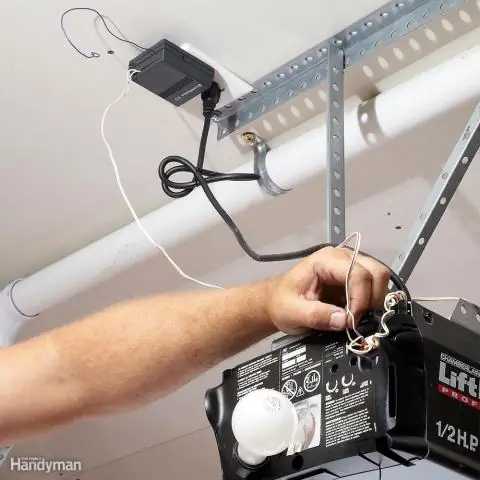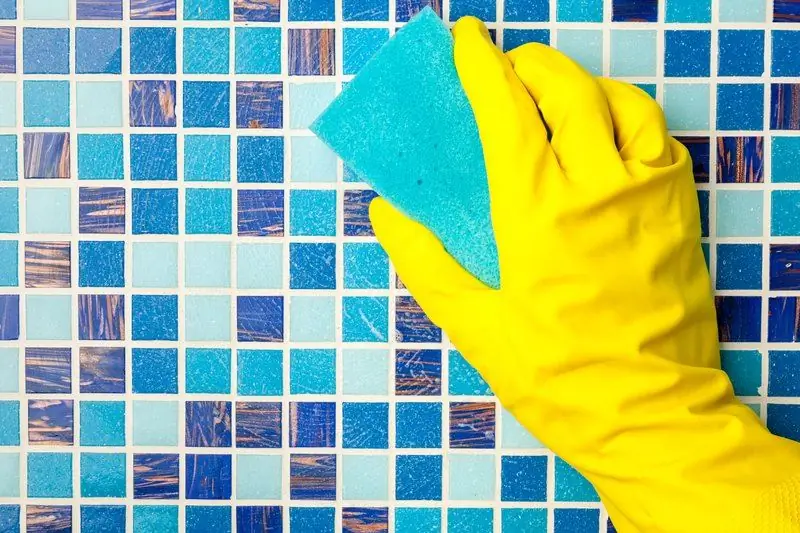
Table of contents:
- Balcony door: features of selection and installation
- Method 1 - drilling with a ceramic tile drill
- Method 2 - drilling holes with a carbide drill for concrete
- Method 3 - drilling holes with diamond core bits
- Method 4 - drilling with a circular drill on a tile or "ballerina"
- Method 5 - drilling large holes
- Video: how to make a hole in a tile using a circular drill
- Author Bailey Albertson [email protected].
- Public 2023-12-17 12:53.
- Last modified 2025-01-23 12:41.
Balcony door: features of selection and installation
When equipping a bathroom, very often there is a need to drill holes in the tiles, which are lined with walls. This can be, as the need to attach a bathroom shelf or other accessory of our everyday life, or simply make holes in ceramic tiles when laying them on the wall or floor. Let's figure out how to drill holes in a tile in detail.
From what diameter you want to get, different cutting tools are used. But, no matter what holes we make, it is necessary to rotate the cutting tool with an electric drill.
Consider the issue of drilling holes in several ways. Methods No. 1 and 2 are suitable for drilling small holes (up to 10-12 mm.), Methods No. 3 and 4 in order to drill holes of medium diameter (from 10 to 80 mm.) And Method No. 5 - holes with a diameter of more than 80 mm.
Method 1 - drilling with a ceramic tile drill
The main difficulty when drilling glazed tiles is a very durable top coating - glaze. And in addition, this layer is very slippery, so an ordinary HSS drill will not work - it will quickly become dull.
For small-diameter tiles, it is best to use a tile drill.

The main feature of this drill is the shape of its cutting part, equipped with a carbide insert with a pointed end, which makes it possible to start the drilling process at a set point more accurately. Similar drills are used to drill glass, an even more slippery material.
For a more accurate hit in the desired marked place during drilling, it is recommended to mark the drilling site and glue a piece of tape to this place. Or stick a piece of masking tape and mark the drilling site on it.
And one, and the other method makes it possible to start the process of drilling a hole in the tile at a specified location without deviation. The drill will not slip and move away from the mark when rotated. As the work is completed, the tape or masking tape is removed.
Method 2 - drilling holes with a carbide drill for concrete

This method is very common in everyday life due to the high availability of cutting tools - carbide-tipped drills - and its widespread use. Almost every master has it at home in reserve, and, for sure, of different diameters and different lengths.
Drilling with this tool is also not difficult when using the method of holding the drilling point at the entrance, described above. The main feature of using this method of drilling ceramic tiles is that it is necessary to start drilling ceramics at very low speed of the power tool.
The first and second methods are most often used for drilling holes for dowels and further fastening various interior items.
Method 3 - drilling holes with diamond core bits

This method is used when it is necessary to obtain cavities for sockets, output of taps for installing a bathroom mixer, etc.
Drilling is performed by rotating the crown on the pilot drill. And the quality and accuracy of the hole will depend on what quality diamond dusting and grain size. The main disadvantage of this method is the high cost of the crown itself, which ranges from $ 30 to $ 80.
Method 4 - drilling with a circular drill on a tile or "ballerina"

The essence of this method is as follows: a movable cutter, fixed on a rod, rotates with a power tool together with a pilot drill. Due to the mobility of the cutter and the ability to move it along the rod, the tool can be adjusted to any desired hole diameter within the rod length. This is very convenient and allows you not to buy, for example, a large assortment of crowns of different diameters.
Another significant advantage of using this tool is its price, which is low and ranges from $ 10 to $ 15.
I carry out the drilling process in several stages:
- I mark the center of the circle;
- I adjust the circular drill to the required diameter;
- I cut through the glazed layer;

4. I make a groove on the back of the tile;

5. I cut the hole from the front side.

Along with many advantages, this method also has disadvantages:
Firstly, this tool is not designed to produce a very large number of cuts. The service life of such a drill is 30-40 holes, although this is quite enough for home use.
Secondly, the tool must be used very carefully and use low speed when cutting. If these conditions are not met, there is a high probability of small tile chips at the cut.
Method 5 - drilling large holes
For large holes, you can use the following technique.
- mark the center and draw a circle line of the required diameter;
- we fill the electric drill with a ceramic drill (or an ordinary drill for concrete) of a small diameter, and with its help we drill along the entire circumference from the inside of the hole. They should be as close to each other as possible.

- remove the drilled inner part. Using nippers or pliers, remove the remaining burrs from our hole.
- we finally grind the inner diameter with sandpaper or an abrasive stone.
You should never use a percussion instrument when using any of these methods. Its application can lead to tile splitting, because along with high rigidity and hardness, it is also very fragile.
Now you also know how to drill holes in tiles with your own hands using various cutting tools.
Video: how to make a hole in a tile using a circular drill
In the future, I plan to continue the series of articles on installing tiles, and the next article will focus on how to install tiles on the walls in the bathroom.
Recommended:
How To Clean Silicone Sealant From Baths, Hands, Tiles, Tiles, Clothes, Glass And Other Surfaces

Mechanical and chemical methods for removing sealant stains. Features for different surfaces. Video Tips
Do-it-yourself Drill Repair: How To Connect A Button, Replace Brushes, Check The Rotor, Repair The Anchor, Instructions With Photos And Videos

Electric drill device. How to properly disassemble and assemble a drill. Possible malfunctions and remedies. Required tool
Pancakes With Milk Thin With Holes: A Step-by-step Recipe With Photos And Videos

How to cook thin pancakes with holes in milk. What ingredients are needed. Step-by-step recipe with photos and videos
How And What To Clean The Tiles In The Bathroom From Plaque At Home: Rules For Effective Cleaning Of Tiles

How to effectively clean the tiles in the bathroom. How to remove plaque from tiles and give them shine. Effective means, tips, instructions
Thin Pancakes With Holes On Whey: A Step-by-step Recipe With Photos And Videos

How to cook thin pancakes with holes in whey. Step by step recipe
